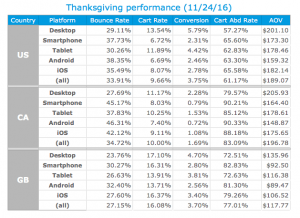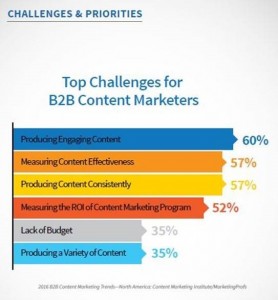While none of us have much time or sympathy for those who deal primarily in business jargon, we must tread a fine line when it comes to discounting trends and concepts. After all, there is often a fine line between business buzz words and ground-breaking constructs, and distinguishing between the two may ultimately prove crucial to your business.
Let’s take thought leadership, for example. Its relatively grandiose title could certainly be confused for jargon, while those without an existing knowledge of thought leadership could easily dismiss it as a vague, short-term trend. Both of these assumptions would be wrong, however, as thought leadership is in fact a simplistic principle that can help your business to build brand loyalty and drive repeat custom.
Understanding Thought Leadership: How to Influence your customers through your Blog
Through thought leadership, businesses and entrepreneurs can use their acquired expertise to inform and influence their customer’s decisions. This not only helps them to become established within a specific market or commercial space, but it also serves as an entry point into mutually beneficial relationships with individual consumers. Over time, brands are therefore able to build trust and loyalty while also laying the foundation for long-term success.
The ability to influence is central to successful thought leadership, as is the capacity to reach a large and targeted audience. In this respect, your blog represents the best channel through which to interact with consumers and build an engaged following.
There are subtle differences between blogging and influencing, however, with the latter relying on more than outstanding writing skills to successfully engage their readers. While high quality content is still central to thought leadership, it is also important to focus on other elements that leverage the true potential of your blog as a tool for influencing: –
Size matters: Create Longer Blog posts that make a compelling point or argument
The ideal length of a blog post has been debated for years, and the fact remains that there is an argument to be made for both short and long-form content. When it comes to thought leadership, however, there is no doubt that longer and more detailed posts offer writers a far better chance to influence consumer ideals.
This is backed by wider trends and research too, with a survey conducted by Orbit Media Studios confirming that the average blog post length in 2015 was 900 words. This is an increase of 100 words and more than 10% from the previous year, and it underlines an overwhelming drive to create substantive content in the increasingly over-saturated virtual world.
Why are in-depth and longer blog posts particularly important to thought leaders, however? The answer is that content rich with detail and statistics offers greater insight to customers, while also informing them and creating a focal point for interaction. It is also easier to make a compelling point or argument through a longer blog post, so long as it is articulately written and has a clearly defined proposition.
So, focus on creating longer posts of between 900 and 1500 words while also ensuring that you create compelling content that has a striking message for consumers.
Think beyond Text: Use Graphics, Video and rich media to hook readers
When blogging, it is easy to become pre-occupied with the use of text and supporting hyper-links. While this remains the best way to argue your perspective or share an idea through your blog, however, thought leaders may want to consider graphical and video elements if they are hook visitors and influence their outlook and behaviour.
This makes perfect sense from a research perspective, with online video consumption currently increasing at a faster rate than television or mobile. The average time spent watching videos online is expected to rise by one hour each day, a consumers continue to seek out media rich content that offers great value and a more immersive experience.
Content with high quality and engaging graphical elements is also increasingly successful in the modern age, recording higher levels of social sharing and engagement online.
This is the key point to bear in mind, as the subtle integration of appealing graphical elements and relevant videos into your blog content have instantly make it more engaging to customers. They will therefore be more inclined to interact with the post and share it within their own social network, extending the reach of your business and its profile among consumers. Similar graphical components can also have a similar impact, from infographics and icon sets to the use if high-resolution imagery.
To capitalise on this and influence your readers through media rich content, you will first need to consider the layout and formatting of your posts to ensure that graphical components become a central feature. You must also make sure that you incorporate relevant and high quality graphical elements throughout, and in the case of video strive to embed content directly from YouTube rather than uploading directly. Otherwise, you run the risk of decreasing page load times and undermining the importance of your message.
Measure your Impact: Use analytics to see whether you are being successful
While every business blogs for its own reasons, not all use the existing range of analytical tools to determine whether or not they are achieving their goals. An estimated 49% of bloggers reported that they failed to check analytic results back in 2014, but while this may be relatively harmless in some instances it can be devastating to those who wish to become thought leaders.
If the goal of thought leadership is to inform and influence the behaviour of customers and establish fruitful relationships, it is imperative that brands measure their efforts and understand how they are perceived by their audience. Without this, businesses cannot continue to influence customers over a prolonged of time or effectively measure their ROI.
There is a greater emphasis being placed on analytics by business bloggers as a whole, with an 8% increase in the number of brands that adopted a strategic approach to measuring their impact in 2015. More specifically, there was an increase in the number of bloggers who monitored analytical results constantly and on a regular basis, which in turn offers greater opportunity to tailor strategies and achieve better results over time.
So if you are to effectively influence customers and become the pre-eminent voice in your market, you must start by identifying the key tools that offer you an insight into how your brand is perceived. Google’s Analytics and Webmaster tools are personal favourites, as they utilise the largest data-sets and offer a true indication of your standing.
Buffer is also an excellent analytical tool for aspiring thought leaders, as it monitors content shares and engagement levels through social media, which is the ideal platform for promoting blog content influencing customer’s thoughts, emotions and purchasing decisions.
Digital & Social Articles on Business 2 Community(20)









